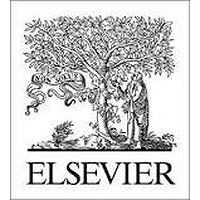Silkworm is an important economic insect. Abuse of organophosphorus pesticides in recent years often leads to poisoning of silkworms, which significantly affects sericulture development by reducing silk production. Previous studies have shown that TiO2 NPs can effectively mitigate the damages caused by organophosphorus pesticides in silk glands and nerve tissues. The fat body is an important metabolic detoxification organ of silkworms, but it is unknown whether TiO2 NPs affect pesticide metabolism in fat body. In this study, we characterized the transcription of antioxidant genes and enzyme activity in fat body after TiO2 NPs and phoxim treatments using transcriptome sequencing, real-time PCR, and enzyme activity assay. Transcriptome sequencing detected 10 720, 10 641, 10 403, and 10 489 genes for control group, TiO2 NPs group, phoxim group, and TiO2 NPs + phoxim group, respectively. The TiO2 NPs + phoxim group had 705 genes with significantly differential expression (FDR < 0.001), among which the antioxidant genes thioredoxin reductase 1 and glutathione S-transferase omega 3 were significantly upregulated. In phoxim group, the expression levels of superoxide dismutase (SOD), catalase (CAT), glutathione S-transferase delta (GSTd), and thioredoxin peroxidase (TPx) were increased by 1.365-fold, 1335-fold, 1.642-fold, and 1.765-fold, respectively. The level changes of SOD, CAT, GSTd, and TPx were validated by real time PCR. The contents of reactive oxygen species (ROS), malondialdehyde (MDA), and hydrogen peroxide (H2O2) were increased by 1.598-fold, 1.946-fold, and 1.506-fold, respectively, indicating that TiO2 NPs treatment can relieve phoxim-induced oxidative stress. To clarify the mechanism of TiO2 NPs's effect, the transcription levels of P450 gene family were measured for the TiO2 NPs + phoxim group; the expression levels of CYP4M5, CYP6AB4, CYP6A8, and CYP9G3 were elevated by 2.784-fold, 3.047-fold, 2254-fold, and 4.253-fold, respectively, suggesting that high expression of P450 family genes can enhance the metabolism of phoxim in the fat body. The results of this study indicated that TiO2 NPs treatment promoted the transcriptional expression of the P450 family genes to improve the fat body's ability to metabolize phoxim and reduce phoximinduced oxidative stress. This may be the main mechanism of TiO2 NPs' mitigation of phoxim-induced damages in the fat body. (C) 2015 Elsevier Inc. All rights reserved.

Mechanisms of TiO2 NPs-induced phoxim metabolism in silkworm (Bombyx mori) fat body
Review badges
0 pre-pub reviews
0 post-pub reviews
